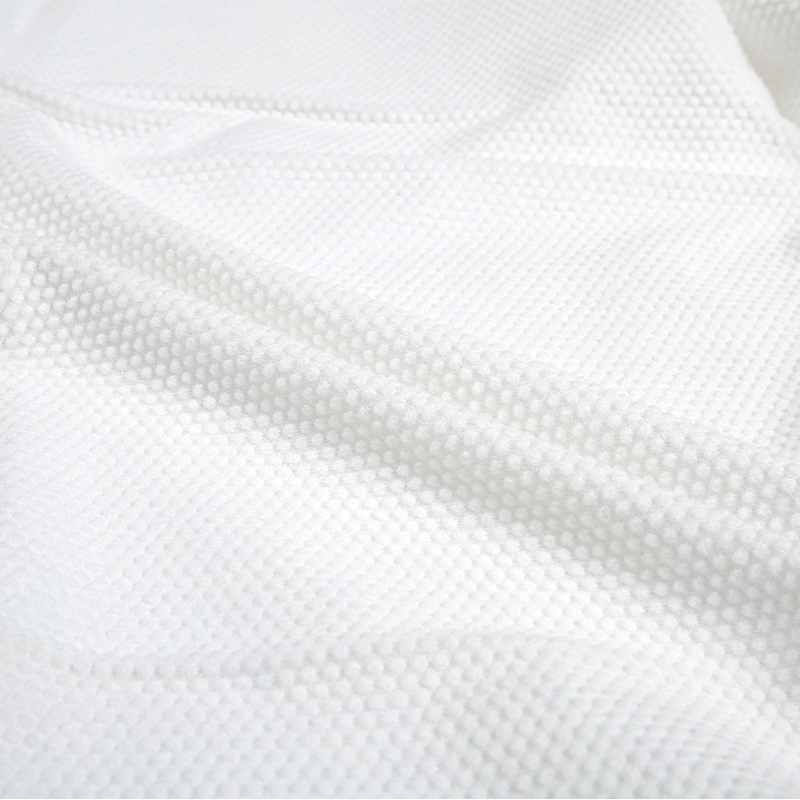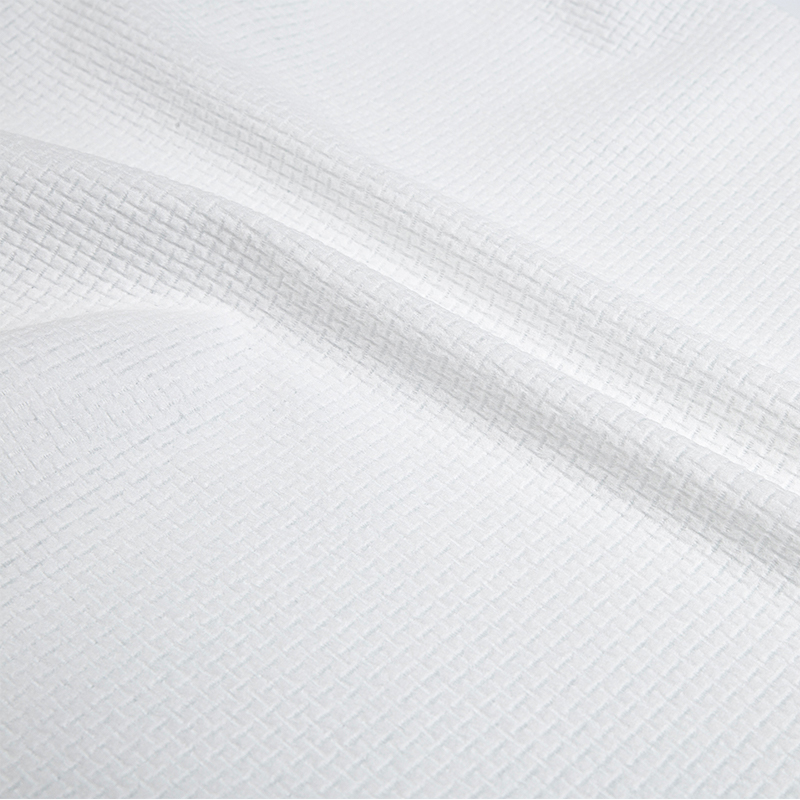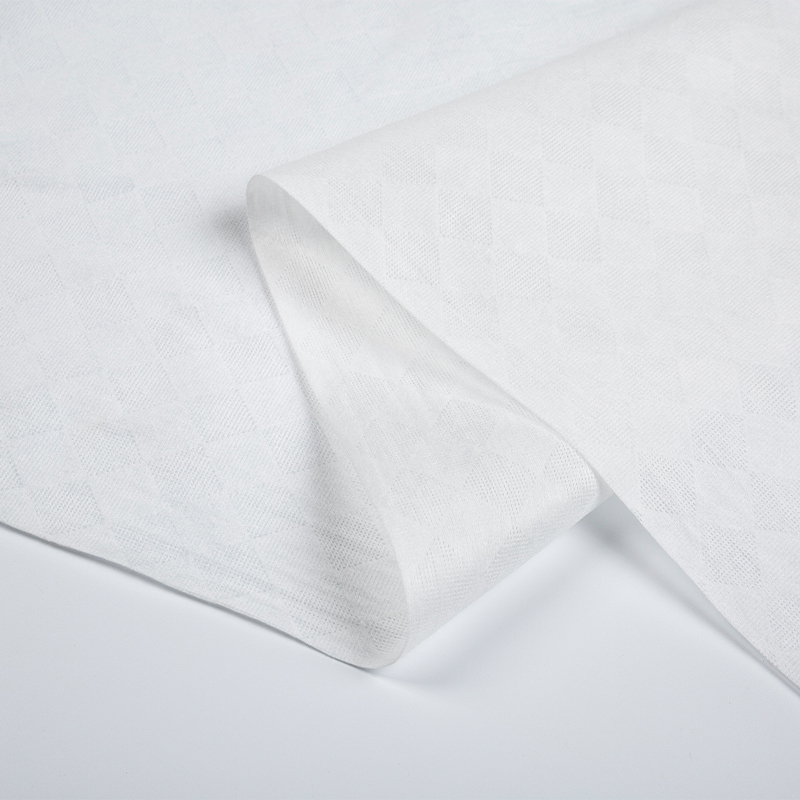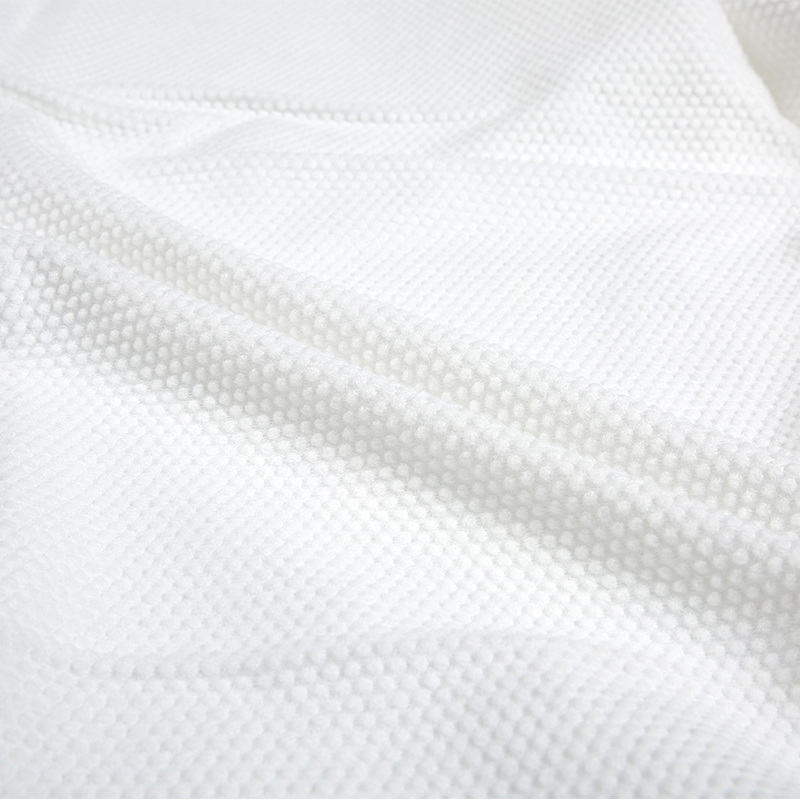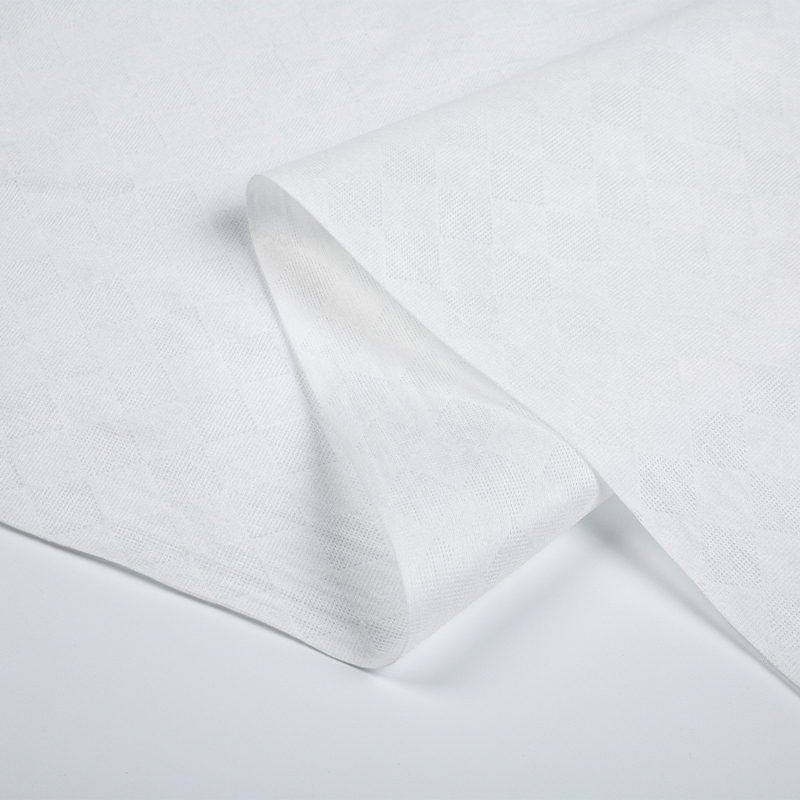Founded in 2022, Hangzhou Shunlong Nonwovens Technology Co., Ltd. is a professional China nonwoven fabric manufacturer and non-woven raw material factory
Semi-Cross Spunlace Nonwoven is a nonwoven fabric produced through the semi-cross spunlace process. This process uses high-pressure water flow to impact and comb the fiber web to form a tightly interwoven structure between the fibers, thereby obtaining a soft, fluffy, and highly absorbent non-woven material.
unique advantages
Excellent water absorption properties
The production process of Semi-Cross Spunlace Nonwoven uses the spunlace process, which is a method of impacting and carding the fiber web through high-pressure water flow. This process ensures a tight and uniform interweaving structure between fibers while creating a large number of tiny pores. These pores not only provide good air permeability, but more importantly, they provide space for moisture to quickly penetrate and be stored. The fiber quality of Semi-Cross Spunlace Nonwoven is also a key factor in its excellent water absorption properties. In general, fibers with smaller diameters have better water absorption because they have a larger specific surface area and can contact and adsorb water molecules more effectively. In addition, the spacing between fibers is also an important factor affecting water absorption performance. Proper fiber spacing ensures rapid diffusion of moisture within the material, thereby improving overall water absorption efficiency.
Good softness and fluffiness
Since Semi-Cross Spunlace Nonwoven uses a semi-cross spunlace process, a tight and uniform interweaving structure is formed between the fibers. This structure makes the non-woven fabric have good softness and fluffiness, and feels comfortable, making it suitable for making underwear, bedding, etc.
Environmentally friendly and biodegradable
The raw materials of Semi-Cross Spunlace Nonwoven are mostly natural fibers or recyclable synthetic fibers. During the production process, there is no need to use a large amount of chemicals and dyes, so it has less impact on the environment. In addition, this kind of non-woven fabric can be naturally degraded after use and will not cause long-term pollution to the environment.
Antibacterial and anti-mildew
The fiber surface of Semi-Cross Spunlace Nonwoven has a fine concave-convex structure, which can effectively inhibit the growth of bacteria and mold. At the same time, antibacterial agents or antifungal agents can be added to non-woven fabrics during the production process to further improve their antibacterial and antifungal properties. This gives Semi-Cross Spunlace Nonwoven a wide range of application prospects in medical, health and other fields.
good processing properties
Semi-Cross Spunlace Nonwoven has good processing performance and can be processed by cutting, sewing, hot pressing and other methods. This allows non-woven fabrics to be customized according to different needs to meet the needs of various application scenarios.
Wide range of applications
Because Semi-Cross Spunlace Nonwoven has the above advantages, it is widely used in many fields such as medical, sanitation, home furnishing, and clothing. For example, in the medical field, it can be used to make surgical gowns, masks, gauze, etc.; in the health field, it can be used to make sanitary napkins, diapers, etc.; in the home field, it can be used to make curtains, carpets, etc.
Semi-Cross Spunlace Nonwoven, as a special type of non-woven fabric, has the advantages of excellent water absorption performance, good softness and fluffiness, environmentally friendly degradability, antibacterial and mildew resistance, and good processing properties. These advantages make it stand out among many non-woven materials and have broad application prospects and market potential.
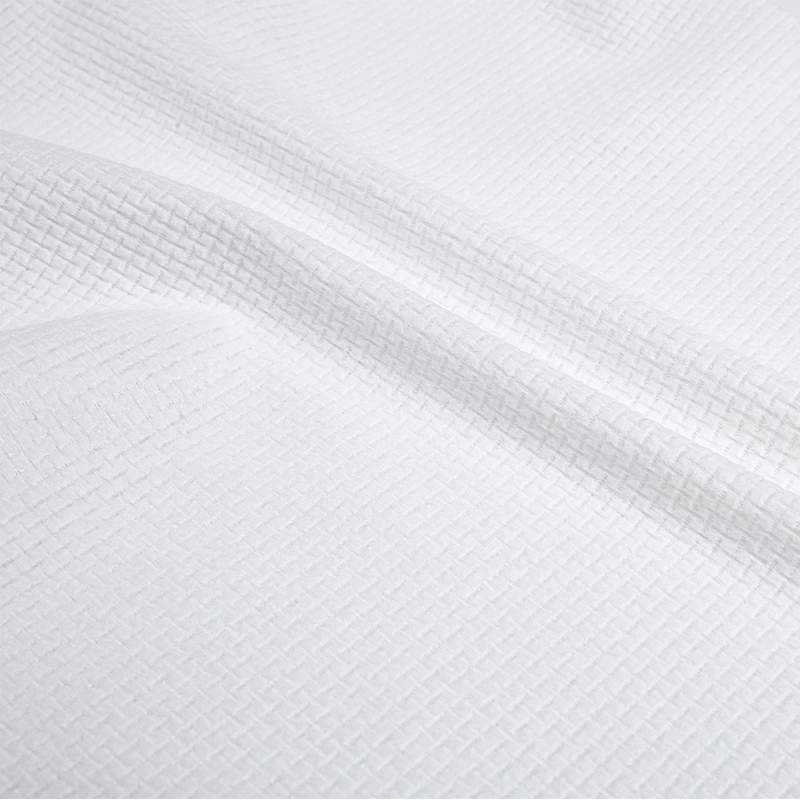

 English
English 日本語
日本語 русский
русский Español
Español